All about Pushkin
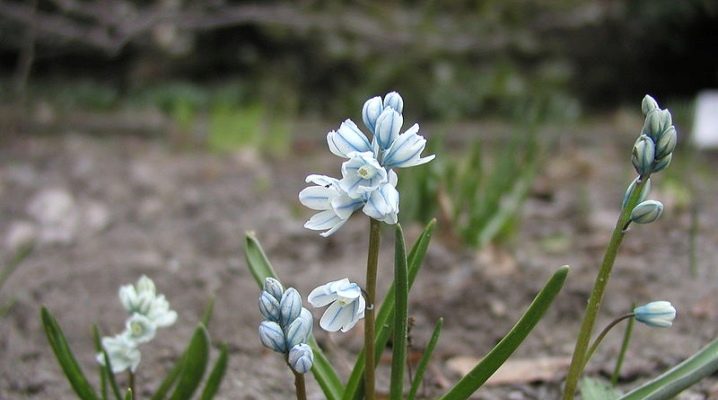
Primroses are the first to stand out against the background of bare space. There are not so many types and varieties of Pushkinia, but the beautiful name attracts gardeners. However, this humble flower is interesting not only for its name.
Bulbous perennial blossoms with delicate blue-white buds. Elegant bushes can decorate any part of a summer cottage or a reservoir. If you want to have a "star" in your garden, choose Pushkinia. In the article we will talk about the features of reproduction and care of this primrose.
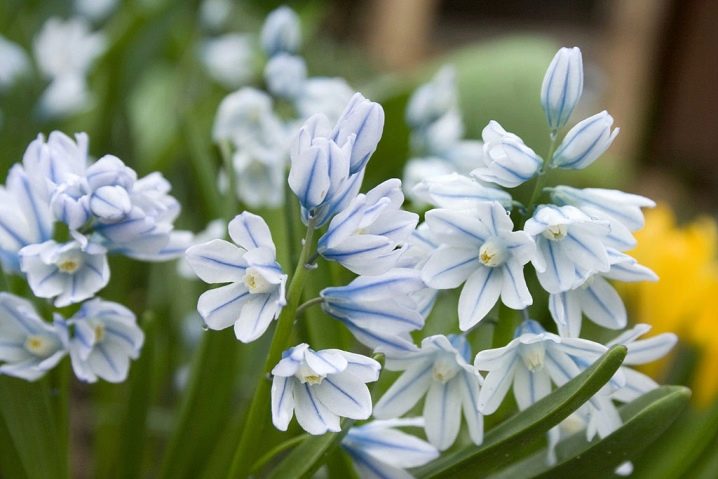
Description of the plant
Pushkinia flower is a perennial herb, this spring primrose reaches a height of 15-20 cm. It is classified as an ephemeroid. Propagated by egg-shaped bulbs with thin brown scales.
The leaves grow from the base of the Pushkinia stem: usually they are 2-3 leaves of a linear-belt-like shape of a dark green hue.
Bell-shaped flowers, either white or pale blue, are collected in racemose inflorescences.
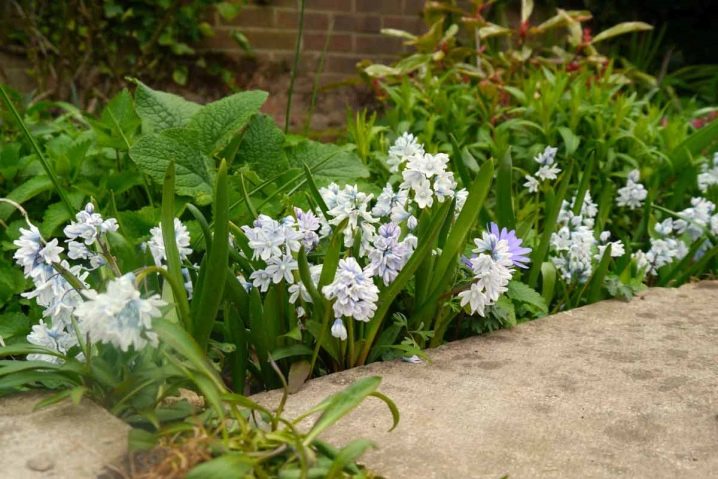
The plant emits a not very pleasant smell - although the aroma is not strong, but all the same, notes are heard such that you do not want to enjoy them. But outwardly, the flower is beautiful. The fruits of this plant are in the form of a box, in which there are round light brown seeds.
This long-awaited spring flower is highly decorative, which is why it is planted in small household plots together with other primroses or perennial flowers. Pushkin is good and, in combination with stones, looks great in rockeries.
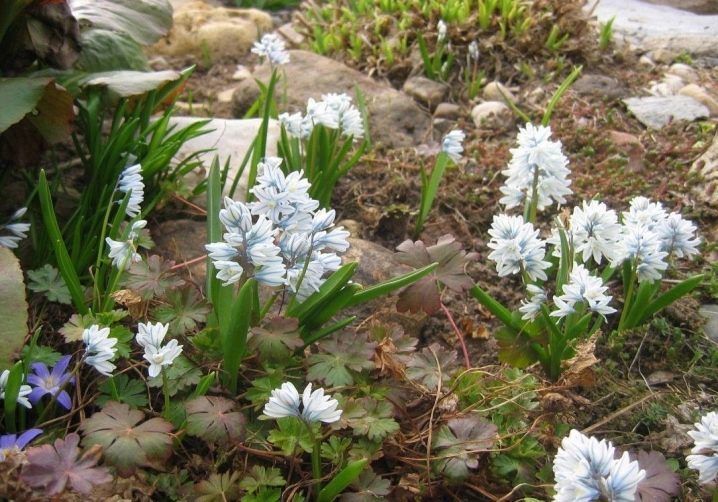
Types and varieties
This primrose received an unusual name in honor of Musin-Pushkin, who first described this flower. For cultural cultivation, there are 2 types of Pushkinia.
Hyacinth
It is found in northern Iran and eastern Transcaucasia, grows on the slopes of mountainous terrain. This species pleases with flowering within 10-20 days. From an adult bulb, several peduncles grow at once (up to 4 pieces).
Each peduncle grows up to 15 centimeters tall and bears an inflorescence of 12-30 pale blue, almost white flowers, consisting of petals with a blue stripe in the center. The leaves of this charming plant are rather fleshy - linear, reaching a height of 15 cm and a width of no more than 10 mm.
If in the first year of growth, hyacinth-like Pushkinia did not please you very much, do not be upset, the primrose will certainly show itself in all its glory by the second season.
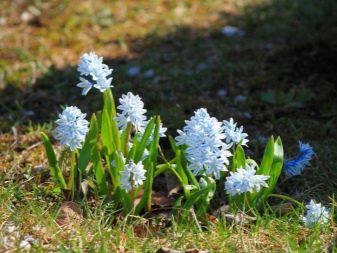
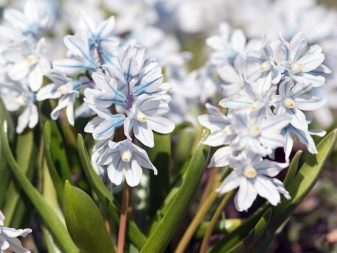
Scrub-like
Found in the Caucasus, Lebanon, Turkey, Iran. He also prefers mountainous terrain, but chooses forest edges and meadows on the slopes, where other shrubs grow. Peduncles of this species are slightly larger than those of hyacinthus, they reach a height of 20 cm and give racemose inflorescences.
The pale blue bell-shaped flowers also have a strip on the back, but only a brighter one - almost blue (Blue). The forest-shaped Pushkinia blooms almost all of May.
A variety called Pushkinia Lebanese Alba or Libanotica (Libanotica Alba) is widely known. This type of Pushkinia is distinguished by its snow-white flowers of a larger size, which have two-toothed crowns.
All activities for planting and caring for libanotics are the same as for the main types of cannon.
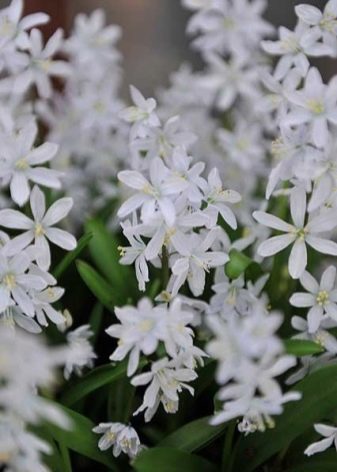
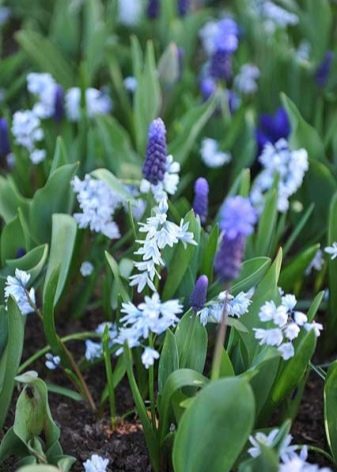
Growing conditions
This humble flower could well be a star in a spring garden if properly cared for outdoors.However, this primrose is not so whimsical as to create special conditions for it, but it is better to follow general recommendations so that the plant grows over time and pleases the eye.
A place
Pushkinia is a light-loving plant, it is better for her to find an illuminated area or a semi-shady corner, where the sun's rays still break through. But in general, it is very easy to find a place for her in a garden or flower garden - this plant looks appropriate everywhere. It is planted around trees, separately on the lawn area, shrubs separated by it.
From such primroses, they make pretty curbs, planting them along the garden paths. Pushkinia will harmoniously fit into the ensemble with any other spring flowers, for example, with undersized daffodils and botanical tulips.
You can place Pushkinia next to perennial flowers, the foliage of which by the end of spring grows so much that the wilted beauty of Pushkinia becomes imperceptible. It is also planted in rockeries or in the coastal zone of water bodies. In these places, it is good in combination with tenacious and stunted stonecrops.
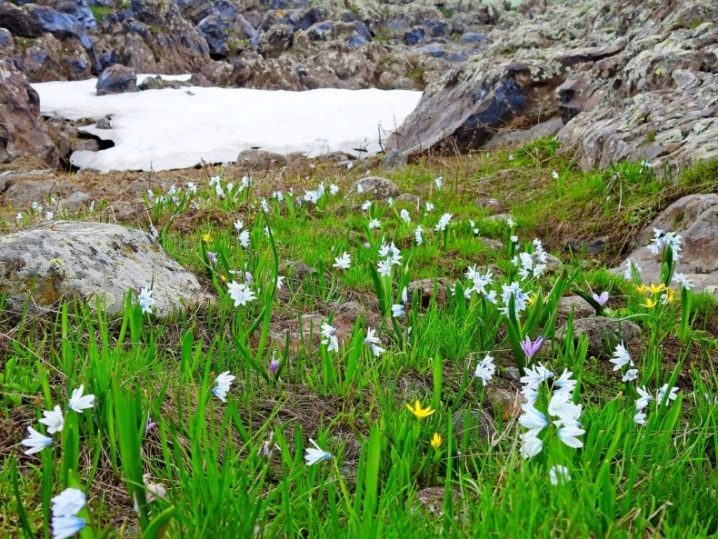
The soil
In nature, Pushkinia grows in elevated places, from which the snow cover earlier comes off, and the earth warms up faster. If there is such a place in the country, give it to Pushkinia. The plant is not too demanding for the soil composition, but it will be an advantage if the plant is planted at home on fertile soil with a loose, permeable structure.
So it will show the greatest decorativeness. To enrich the soil before planting, you can apply rotted manure at the rate of 5-7 kg per square meter.
Avoid those areas where water stagnates (melt, rain), this is detrimental to the primrose.
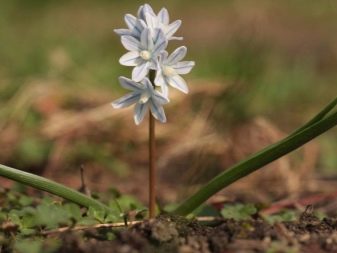
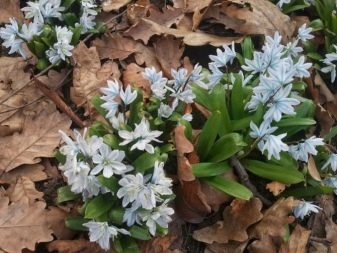
Landing rules
The bulbs are planted to a depth of 5 centimeters, and a space of up to 10 centimeters is left between the bushes. This is a perennial plant, you do not need to dig it up before each winter and plant it again in the spring, as, for example, do with some types of bulbous flowers. With pushkin everything is much simpler: the longer it is not disturbed, the more it grows, forming extensive curtains or a solid carpet. Freshly planted bulbs overwinter normally in the ground without shelter. In regions where there is little snow, it is possible from autumn to mulch the planting sites with a peat or humus layer at a level of 3-7 cm.
If you want Pushkinia to please the eye in winter, you can plant it in a flower pot. Its height should be at least 7 centimeters and a diameter of at least within 15 cm. The vessel is filled with a loose composition of turf soil (2 parts), river sand (1 part), leaf humus (1 part).
The bulbs are planted in a pot in November, then it is left in the basement for 60-75 days, where it should be dark, the temperature should not exceed +10 degrees, and the humidity should be at the level of 80-90%. After 2-2.5 months, the pot is brought into a room where the air temperature does not exceed +15 degrees, and watered. If you follow all these rules, after 14-20 days, Pushkinia will delight you with flowering on the windowsill.
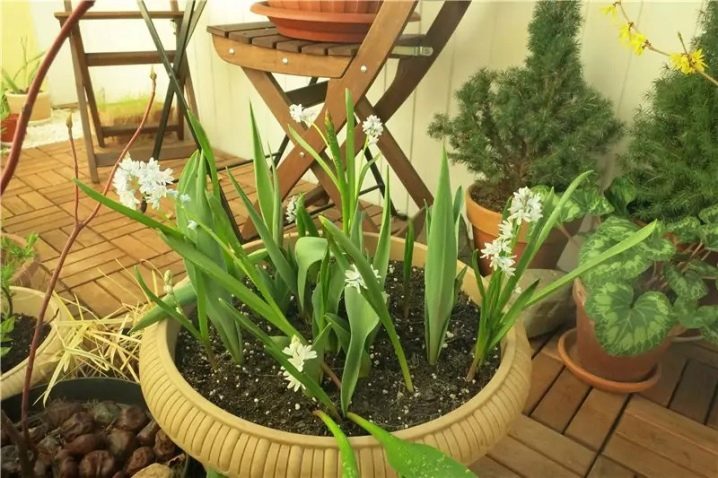
Watering
If the spring is dry, there is little melt water, and there is no rain, then watering can be started right in the spring. But water is especially needed by the plant during active growth and during the flowering period. Try not to let the soil dry out during these important moments in the development of the primrose, and water the cannon regularly.
When watering, you need to try not to wet the leaves - this can lead to their rotting. When it comes to watering the planting, this place can "sink".
In this case, it is better to fill the voids by adding soil to the desired level.
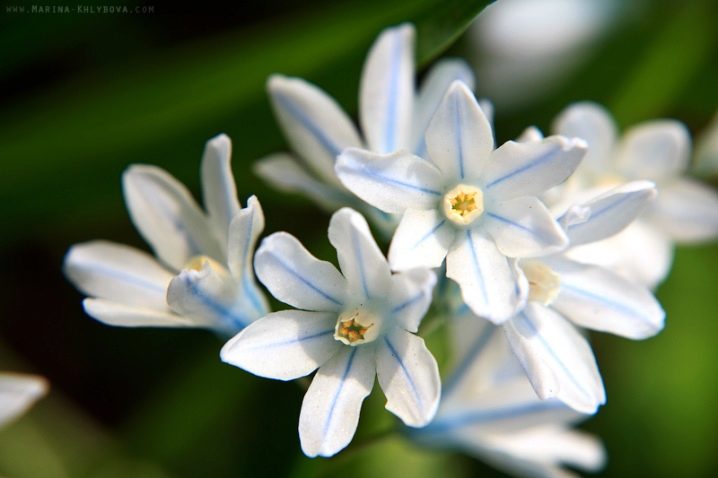
Top dressing
They begin to feed the fragile plant in early spring. Even if there is still snow on the ground, mineral fertilizers can already be applied for pushkinia. It can be nitrophoska. It is simply scattered in the place where the flower grows, at an average rate of 50 g per square meter of land.
Enrich the soil before new plantings with superphosphate (50-70 g per square meter), ammonium nitrate (40-60 g), potassium chloride (30-50 g). It is necessary to avoid nitrogen fertilizers or not to overdo it with their introduction - an excess of such a composition can lead to Pushkin disease.
And in order to prevent the growth of weeds, which can easily strangle a fragile flower, mulch the soil with humus or peat - in addition to protection, this is also additional nutrition.

Reproduction
Pushkinia reproduces at the expense of daughter appendages. The bulbs are not recommended to be dug out immediately after flowering. For transplantation, this is done in early autumn. There is one invariable rule when propagating this flower - you need to give time for the bulb to form a nest in the ground.
An overgrown nest is usually formed in 5-7 years - that's when the plant is dug out for its reproduction. Yes, the reproduction process in Pushkinia is much slower than in other small-bulbous flowers, the more valuable this plant is.
If it gets on the site, each gardener will take care of it and especially protect it from diseases and pests. By the way, Pushkinia sets seed pods, but seedlings practically do not grow at home.
However, as soon as the inflorescences in the garden wither, they are recommended to be plucked, so it does not come to self-seeding. But you can buy seeds, and in the first half of autumn (until the ground has cooled down, and at night the temperature does not drop below zero degrees), plant them by making beds. Seed propagation will not immediately bring flowering. Only for 3-4 seasons, the Pushkin, planted with seeds, will bloom.
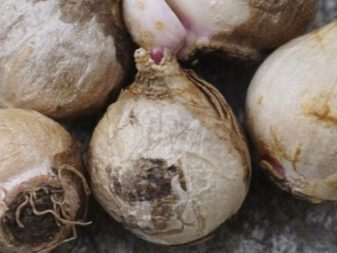

Diseases and pests
Pushkinia becomes infected with the same diseases as other bulbous plants. So, it is affected by gray rot. If brown spots appeared on the leaves, it means that the fungus botrytis attacked the Pushkinia, which causes gray rot.
This fungus is omnivorous, it quickly "migrates" from one plant to another, and we must try to get rid of it as soon as possible after detection. The affected parts are removed, and the plant itself is treated with such agents as Champion, Topaz, Bordeaux liquid is also suitable for this.
If the defeat is rather strong, it is better to use more powerful means - these are Fundazol, Skor and others. Rot can corrode the cannon from the underground part. So, if the fungus attacks the bulbs, they become red-brown spots, and in the aerial part, the leaves at the base begin to turn yellow.
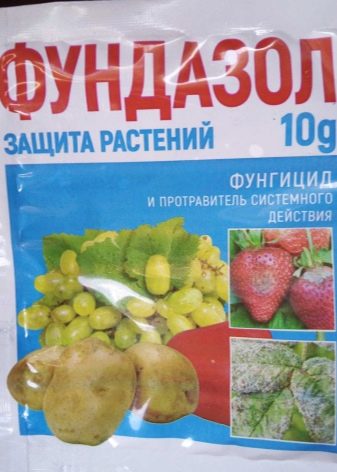
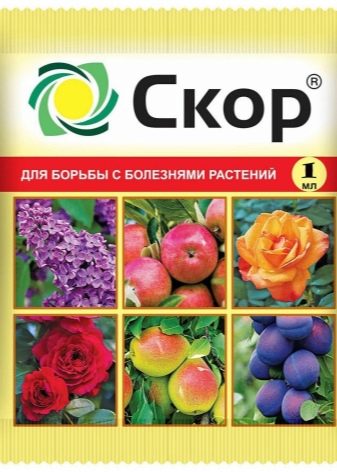
This infection is especially dangerous because it can remain in the ground. Preparations containing copper will help Pushkinia. Before planting again, inspect each bulb and get rid of suspicious specimens. Another disease causes rotting of the bulbs - achelenchoides.
The infection negatively affects the development of the primrose, the plant eventually loses its decorative effect. Such bushes need to be dug out, the affected bulbs must be destroyed, and it is better to soak the new seed material in very warm water (within 40 degrees) before planting.
And the planting material is treated with insecticides - this is a preventive measure against root meadow mites, which penetrate deep into and feed on onion scales.
Among other pests, mice are a danger to Pushkinia. They are fought with in traditional ways - with mousetraps or poisoned baits.
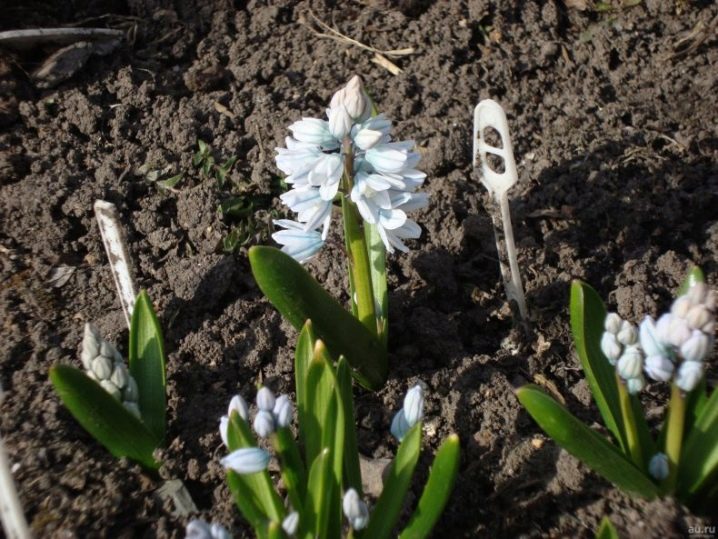







































































































The comment was sent successfully.